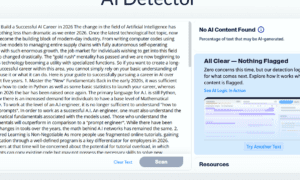Investment managers already juggle client relationships, market trends, and fund performance—you wouldn’t want the added stress of facing penalties with SEC filings, right?
You must research and comply with the rules to ensure it won’t bite you back later. But here’s another problem: there’s a lot of confusing information on the internet. You find an article about SEC filing, but it’s full of jargon that makes it even harder to comply.
“13D?” “Form ADV?” “Form 13F?”
Even if you’re an experienced investment manager, it can be confusing because SEC filings evolve—and it’s not your fault. Information like this should be accessible and easy to understand.
So that’s what we’ll do: break down the complex concepts of SEC filing requirements so that even a beginner can understand.
(Disclaimer: This article is for informational purposes only and does not constitute financial advice.)
Overview of SEC Filing Requirements for Investment Managers
SEC filings are simply legal documents that investment managers submit to the SEC to disclose financial and operational details. They cover everything from registration and investment holdings to trading activity and voting records.
These rules are set to keep transparency and accountability in the financial industry.
If you fail to file the correct documents or if you don’t file them on time, you might face penalties, reputational damage, or even legal consequences that would hold back your operations.
Types of SEC Filings Relevant to Investment Managers
To avoid the penalties, you simply have to comply with the rules. So, here are the details about the types of SEC filings relevant to investment managers to help you comply:
Form ADV
Form ADV is required for anyone acting as an investment advisor. You’ll provide details of your firm’s business practices, fees, services, and disciplinary history. It has four parts: Part 1A, Part 1B, Part 2, and Part 3
- Part 1A covers general business information,
- Part 1B is only if you are applying for registration or registered as an investment adviser with any state securities authorities.
- Part 2 is for a public disclosure brochure for clients.
- Part 3 is whether you have any retail investors to whom you must deliver a relationship summary,
You need to file this no later than 90 days after the end of its fiscal year to amend its registration or its report. You must file this form through the Investment Adviser Registration Depository (IARD).
Form 13F
If you have control over $100 million in certain publicly traded securities, you need to file Form 13F. The purpose of this form is for the SEC to monitor investment activity among large asset managers.
You can see the official list of Section 13(f) securities to determine if you meet the reporting criteria. SEC updates this quarterly.
As for the filing deadlines, you must file them quarterly, and they are due within 45 days after the last day of each calendar quarter.
If multiple managers share investment discretion over the same securities, only one manager needs to include those holdings in their Form 13F submission. However, any manager relying on another to report on their behalf must disclose this in their filing.
Form N-PX
Form N-PX is a requirement if you filed Form 13f to disclose how you vote on shareholder matters as an institutional investment manager.
This filing increases transparency in proxy voting decisions on issues such as executive compensation, board elections, and corporate governance policies. It’s filed annually by August 31, covering the most recent 12-month period ending on June 30.
Form 13H applies to institutional investment managers who have voting authority over securities subject to SEC Rule 14A under the Securities Exchange Act of 1934. If multiple investment managers vote on the same security, only one is required to report it.
You can file Form N-PX electronically through EDGAR (Electronic Data Gathering, Analysis, and Retrieval system).
Form PF
Now, if you’re managing private funds with at least $150 million in assets, you must file Form PF.
The purpose of this filing is to provide regulators with data on private funds to assess potential risks to financial stability. The requirements you’ll file will depend on the size and type of private funds you manage.
Most private fund advisers need to complete only Section 1 of Form PF and file annually. But if you’re a large private fund adviser—such as managing at least $1.5 billion in hedge fund assets or $1 billion in liquidity fund assets—you must provide additional data and file quarterly. You may also be required to file current event reports under specific conditions.
You can submit Form PF electronically through the Private Fund Reporting Depository (PFRD).
Schedule 13D and Schedule 13G
Schedule 13D/13G filing is for investors with more than 5% of the voting class of a company’s equity securities.
But what’s the difference between 13D and 13G?
Schedule 13D is for investors who intend to influence or control the company(such as pushing for board changes, mergers, or other strategic decisions.), while Schedule 13G is for passive investors with no such intentions(such as banks, broker-dealers, and mutual funds and certain individual investors).
You must file Schedule 13D within 10 days of crossing the 5% threshold. If the investor makes any significant changes, such as increasing ownership by more than 1%, they must amend the filing promptly.
For Schedule 13G, you’ll have different deadlines that depend on your category.
Some must file within 10 days after the end of the month, while others have 45 days after the end of the calendar year to submit their report. If an investor initially files Schedule 13G but later decides to want to influence the company, they must switch to Schedule 13D and file within 10 days of the change in intent.
Form 13H
If you did transactions of 2 million shares($20 million) in a single day or 20 million shares($200 million) in a month, you must file Form 13H.
You’re basically considered a large trader, and this filing helps the SEC analyze your market impact. You must file it immediately after crossing the threshold mentioned above to register the firm or individual as a large trader with the SEC—with annual updates required within 45 days after the end of each calendar year.
If any material changes happen—such as a change in business structure or trading activity—amended filings must be submitted promptly.
If a trader stops meeting the reporting threshold for a full calendar year, they may file for inactive status, which removes the obligation to file updates. However, if they later cross the threshold again, they must submit a reactivation filing to resume compliance.
You can submit Form 13H electronically through EDGAR (Electronic Data Gathering, Analysis, and Retrieval system).
Form D
Investment funds and companies selling securities under Regulation D exemptions—like Rule 506(b), Rule 506(c), or Rule 504—must file Form D.
This filing notifies the SEC about the offering and includes the issuer’s identity, business type, principal place of business, and related persons involved in the offering. It also includes information about the securities being offered, investor eligibility, and any sales commissions or fees paid to brokers or finders.
You must submit it within 15 days after the first sale of securities through the SEC’s EDGAR system. However, the SEC does not review or approve Form D filings; instead, they serve as public records to increase transparency in private securities offerings.
If the offering continues for more than a year, issuers must file an annual amendment on or before the anniversary of the initial filing. Amendments are also required if there are material changes to the offering, such as an increase in the amount being raised or a change in exemption type.
Form N-PORT
Registered investment companies, such as mutual funds and exchange-traded funds (ETFs), must file Form N-PORT to disclose their portfolio holdings.
This filing provides regulators with monthly insights into fund investments for a clearer view of investment risks. Form N-PORT collects detailed data on a fund’s assets, including securities lending, derivative exposure, liquidity classifications, and portfolio-level risk metrics.
This form is required under Rule 30b1-9 of the Investment Company Act of 1940 and replaces Form N-Q.
The reports are submitted monthly electronically through the SEC’s EDGAR system—with a 30-day delay, and quarter-end reports are made public after 60 days. However, reports for each quarter’s first and second months remain confidential.
Form N-CEN
Registered investment companies must also submit Form N-CEN, which provides census-type data about the fund—including fund classification, investment strategies, service providers, regulatory filings, and operational data.
It helps regulators collect industry-wide statistics, monitor fund activities, and enforce regulations under the Investment Company Act of 1940.
Form N-CEN is filed annually within 75 days after the end of the fund’s fiscal year. For unit investment trusts (UITs), the deadline is 75 days after the end of the calendar year. The Form N-CEN must be filed electronically through the SEC’s EDGAR system.
Each SEC filing has a unique purpose. And for investment managers, it’s your responsibility to remain compliant to build trust with clients and avoid regulatory issues.
3 Best Practices for Ensuring Compliance with SEC Filings
1. Always review your filing obligations
SEC regulations frequently change. So, you must stay informed about their filing requirements because missing updates can lead to compliance issues.
Regularly check the SEC website and join industry associations to keep track of updates. These resources provide insights into new filing requirements, deadline changes, and regulatory adjustments that could impact compliance.
You should also consider training employees on compliance rules or hiring compliance professionals with experience in SEC regulations.
2. Set up reminders for key deadlines
One of the best ways to stay on top of SEC Filings is by setting up reminders for key deadlines. You can use Google Calendar, note it, or use automation tracking tools to never miss a filing date.
Platforms like Workiva and ActiveDisclosure will also help you manage compliance documentation efficiently.
3. Maintain transparency with record-keeping
Investment managers should ensure all documents are accessible and properly stored. If the SEC ever conducts an inspection, having well-organized records will make the process smoother.
Keeping detailed records also helps firms quickly resolve any discrepancies or compliance concerns that may arise.
But how can you do that?
- Use a centralized storage system – Digital compliance management platforms or cloud-based document storage (such as encrypted SEC-compliant systems) help keep records secure and easily retrievable.
- Establish a record-retention policy – Define what documents must be kept, how long they should be stored, and who has access. SEC rules often require records to be maintained for five to seven years, with the first two years stored in an easily accessible location.
- Categorize and index documents – Organize files by filing type (e.g., Form 13F, Form ADV), date, and related transactions. A structured system prevents the loss of important records and speeds up retrieval.
- Maintain digital and hard Copies (if required) – Some SEC rules mandate that certain records be kept in their original form. Having both digital backups and physical copies of critical records ensures compliance.
Beyond meeting regulatory requirements, strong record-keeping helps investment firms quickly resolve discrepancies, address compliance concerns, and protect themselves in case of an SEC inquiry.
4 Mistakes to Avoid in SEC Filings
1. Incomplete or inaccurate reporting
Incorrect or missing information in your filings can lead to penalties, processing delays, and legal issues.
Common errors include misstating asset valuations or neglecting to update client information. These mistakes can lower your investor’s confidence and may result in regulatory scrutiny.
2. Not being timely with SEC filing
Each SEC filing has a specific deadline, and missing these deadlines can result in fines and damage your firm’s reputation. For instance, late filings often cause stock prices to drop, as investors may perceive delays as red flags.
3. Misunderstanding exemptions and filing requirements
The SEC provides certain exemptions, especially for smaller firms. However, misinterpreting these exemptions can lead to non-compliance. Thoroughly understand which filings apply to your firm to avoid violations.
4. Overlooking changes in reporting requirements
SEC rules evolve over time. For example, in March 2024, the SEC adopted new rules mandating climate-related disclosures in public companies’ annual reports and registration statements.
Failing to comply with such updates can result in non-compliance.
Final Thoughts
Adding another the stress of facing SEC filing penalties to an already stress-filled environment is something you should avoid.
But remember: the SEC filing rules are ever-evolving. You have to keep an eye on the updates by continuously reviewing the SEC’s website and having a robust review process.
These might be stressful, but losing a client’s trust and facing penalties? Even more stressful.
(Disclaimer: This article is for informational purposes only and does not constitute financial advice.)



































